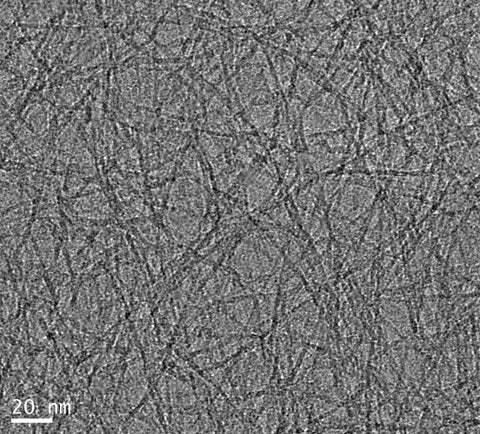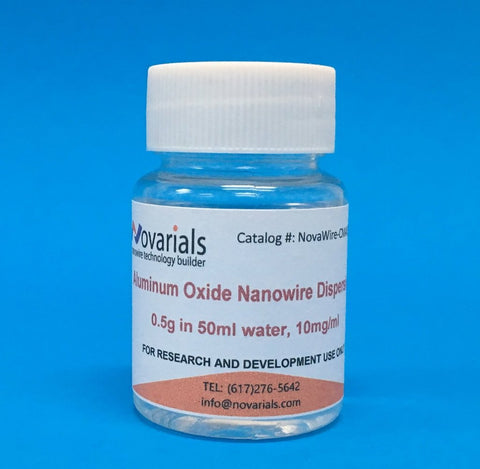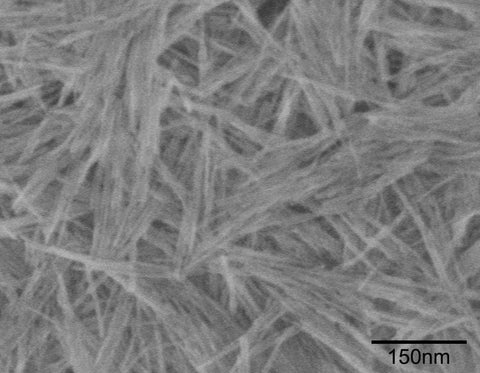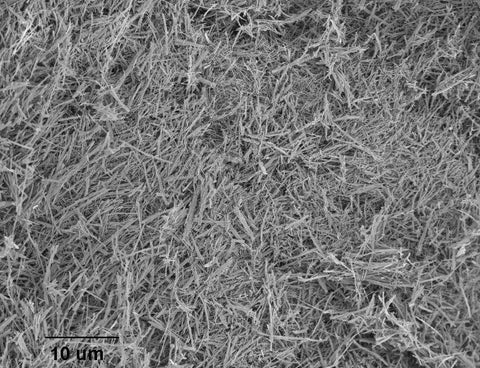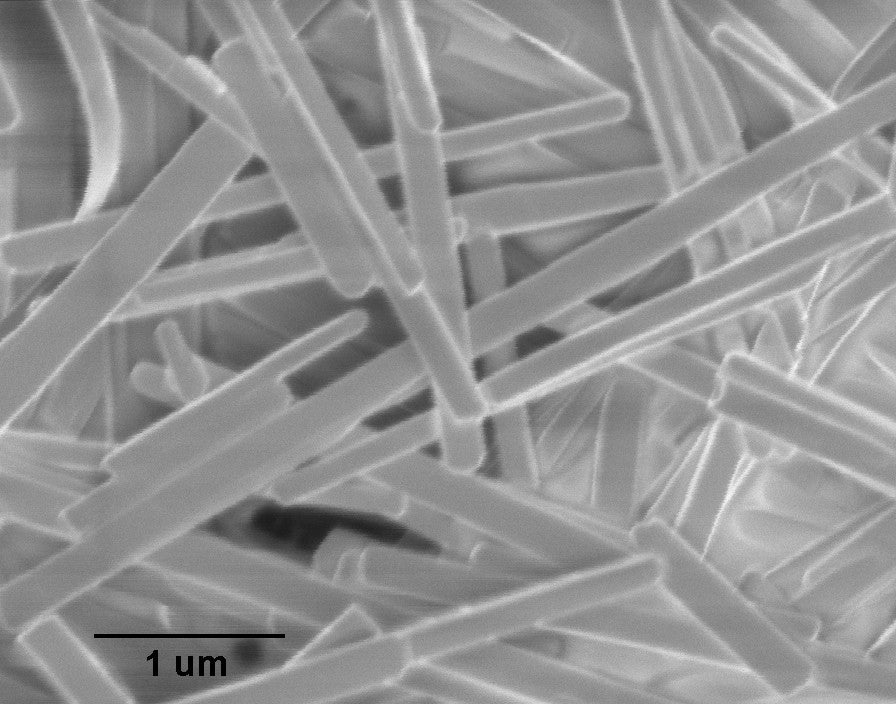
Molybdenum Oxide Nanowires (200nm×5µm)
Catalog Number: NovaWire-MoO-200
Diameter: ~200nm
Length: ~5µm
Appearance: dry light blue powder (can be easily dispersed in water)
Novarials is offering this molybdenum oxide nanowire product at kilogram scale to industry users. Please contact us at info@novarials.com for more information.
In addition to the above MoO3 nanowire product, Novarials also has the capability to prepare the following molybdenum oxide related nanomaterials: (1) MoO3 nanowires with a diameter of ~50nm and a length of ~10µm; (2) MoO3 nanowires with a diameter from 100nm-400nm with a length of 10-40µm; (3) MoO3 nanowires with a diameter of ~350nm and a length of ~400µm; (4) MoO3 single-walled nanotubes; (5) Ag2Mo2O7 nanowires. Please contact us for a quote on the custom synthesis.
APPLICATIONS
Molybdenum oxide nanowires are one-dimensional nanomaterials with nanoscale wires or filamentous structures composed primarily of molybdenum and oxygen atoms. These nanowires exhibit unique physical and chemical properties, including excellent electrical properties, catalytic properties, optical properties, and thermoelectric properties. These properties make them valuable for a wide range of applications.
- Electronics: Molybdenum oxide nanowires exhibit variable electrical conductivity depending on their chemical composition and structure, which makes them suitable for electronic applications. They can be used in the fabrication of field-effect transistors (FETs), flexible and wearable electronic devices, light-emitting diodes (LEDs), memory devices, and transparent conductive films.
- Sensors: Molybdenum oxide nanowires are used in a variety of sensing applications such as industrial safety, environmental monitoring, and gas leak detection. They can be used to create highly sensitive gas sensors for detecting gases such as hydrogen (H2), ammonia (NH3), nitrogen dioxide (NO2), methane (CH4), and volatile organic compounds. They are also used in environmental monitoring, healthcare, and research, including humidity sensors, pH sensors, and biosensors.
- Catalysis and Photocatalysis: Due to their excellent catalytic performance, molybdenum nanowires play a crucial role in chemical reactions and processes. They are used as catalysts in applications like oxidation reactions, water splitting reactions (hydrogen evolution reactions), and other catalytic processes. In addition, molybdenum oxide nanowires can serve as efficient photocatalysts for chemical reactions driven by light, which makes them suitable for wastewater treatment, water purification, air purification, and the removal of organic compounds. They are used in environmental remediation processes to degrade pollutants and contaminants in water and air.
- Energy storage: Molybdenum oxide nanowires have been explored for use in energy storage devices such as batteries and supercapacitors. They are studied as potential anode materials for lithium-ion batteries, where they can efficiently store and release lithium ions, providing high capacity and long cycle life. In addition, molybdenum oxide nanowires are also being studied for use in supercapacitors, where they can enhance the charging and discharging characteristics of supercapacitors, making them useful for energy storage applications.
- Biomedical Applications: Due to their biocompatibility and sensitivity to biological molecules, molybdenum oxide nanowires have been investigated for potential applications in drug delivery, biosensors, and imaging.
- Photodetectors: Molybdenum oxide nanowires can be integrated into photodetectors to sense and respond to light, making them useful in optoelectronic devices.
- Electrochromic devices: Molybdenum oxide nanowires can change their optical properties (such as color and transparency) depending on applied voltage and are used in electrochromic displays and smart windows.
- Thermoelectric Materials: Molybdenum oxide nanowires can convert heat into electricity and have been studied for their potential use in thermoelectric materials.
- Solar Cells: Molybdenum oxide nanowires can be used in solar cells and photovoltaic devices to aid charge transport and light absorption.
SYNONYM
Molybdenum oxide nanowires, molybdenum oxide nanofibers, molybdenum oxide nanobelts, molybdenum oxide, molybdenum trioxide nanowires, molybdenum trioxide nanofibers, molybdenum oxide nanobelts, molybdenum trioxide, MoO3 nanowires, MoO3 nanofibers, MoO3 nanobelts, MoO3, molybdenum oxide nanowire, molybdenum oxide nanofiber, molybdenum oxide nanobelt, molybdenum trioxide nanowire, molybdenum trioxide nanofiber, molybdenum oxide nanobelt, MoO3 nanowire, MoO3 nanofiber, MoO3 nanobelt
SDS

